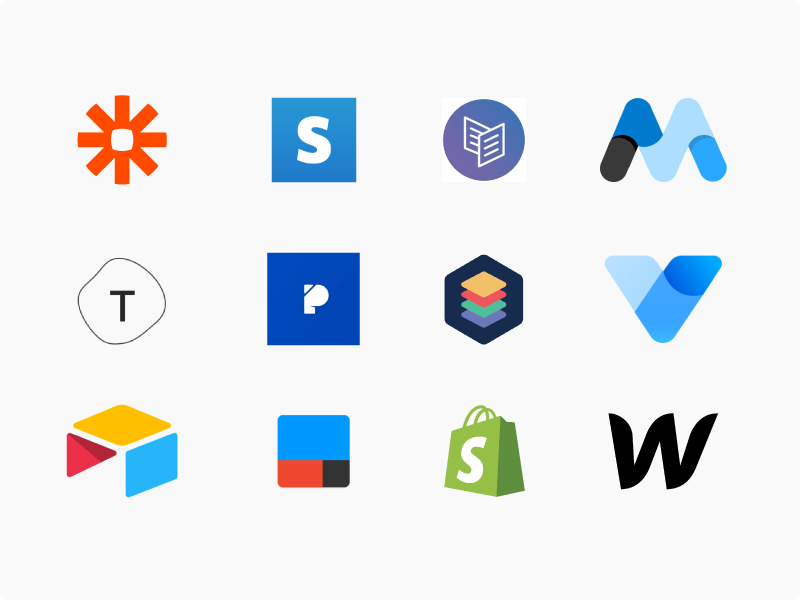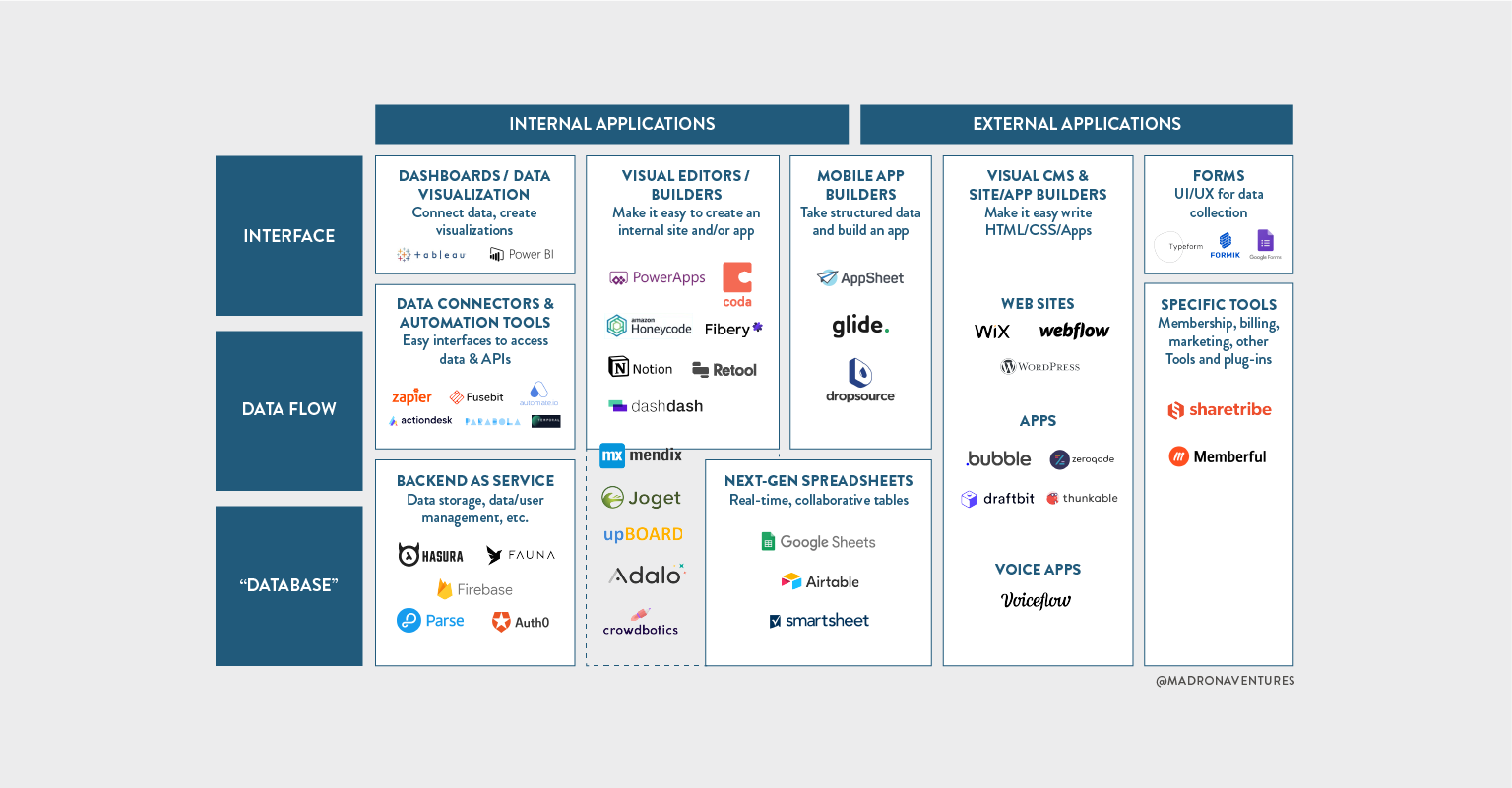Exactly How No-Code Equipment Simplify Open System Data Source Creation for Everyone
Exactly How No-Code Equipment Simplify Open System Data Source Creation for Everyone
Blog Article
Exploring the Benefits of Scalable Data Sources That Call For No Coding Abilities for Effective Information Monitoring Solutions
The development of scalable databases that remove the need for coding skills provides a transformative possibility for organizations seeking effective data administration options. As we take into consideration the implications of such innovations, it ends up being critical to analyze exactly how they can reshape the landscape of information management and drive lasting growth in a competitive atmosphere.
Boosted Access for Individuals
Enhanced ease of access for individuals is an essential aspect of scalable databases, ensuring that information monitoring systems are instinctive and straightforward. In an age where data-driven choices are vital, availability allows a wider variety of customers, consisting of those without substantial technological expertise, to engage with data source systems properly. This democratization of information gain access to facilitates improved cooperation across departments, encouraging staff members to draw out insights and make educated choices.
Straightforward interfaces, such as aesthetic data and drag-and-drop features depiction, streamline complex information communications. These enhancements reduce the understanding contour associated with traditional data source administration, allowing individuals to concentrate on leveraging data instead than coming to grips with technical intricacies. Additionally, scalable data sources typically incorporate personalized dashboards and real-time analytics, offering users with prompt insights customized to their particular needs.

Cost-Effectiveness and Source Cost Savings
Effective information administration not just pivots on ease of access but additionally on cost-effectiveness and resource savings. Scalable data sources developed for users without any coding skills dramatically minimize financial problems usually related to standard database monitoring systems. By eliminating the demand for specialized shows know-how, organizations can allot their resources more effectively, focusing funds on core company tasks rather than extensive training or working with proficient workers.
Moreover, these data sources typically utilize cloud-based solutions, which additionally reduce prices associated with hardware and maintenance. Organizations can scale their data source services according to their demands, staying clear of the expenses incurred from over-provisioning sources. This flexibility implies organizations can adapt to altering needs without incurring unneeded costs, causing substantial long-lasting savings.
In addition, user-friendly interfaces streamline data access and management procedures, reducing the time invested in management jobs. This performance translates into labor expense savings, enabling groups to concentrate on strategic initiatives instead of routine upkeep. On the whole, adopting scalable databases that need no coding skills fosters a much more economical approach to data monitoring, making it possible for companies to optimize their sources while keeping high degrees of functional efficiency.
Improved Partnership Throughout Teams

In addition, scalable data sources facilitate seamless interaction among staff member. With user-friendly interfaces that call for no coding skills, staff members can conveniently develop, change, and share records or control panels customized to their details demands. This democratization of data empowers non-technical customers to add understandings, boosting the collaborative environment.
Additionally, these databases support concurrent access, allowing multiple users to service the same dataset at the same time. This function improves efficiency, as teams can take part in joint data analysis without the threat of variation control concerns. The capability Full Article to leave notes or comments directly within the database additionally promotes dialogue and makes clear data check my source interpretations.
Streamlined Information Management Processes
In today's data-driven setting, organizations identify the requirement of streamlined information management refines to make best use of effectiveness and precision. By leveraging scalable databases that require no coding abilities, businesses can streamline their information handling and minimize the complexities usually associated with traditional data source systems. This access equips non-technical users to involve directly with data, facilitating quicker decision-making and lowering dependence on specialized IT workers.
Streamlined data monitoring processes enhance workflow by automating regular tasks such as data entrance, validation, and reporting. Automated information combination guarantees that information from different sources is accumulated perfectly, eliminating silos and cultivating a merged view of critical organization metrics (no-code). User-friendly user interfaces allow workers to manipulate data conveniently, enabling them to produce understandings that drive calculated campaigns without the need for substantial training.
This efficiency not only speeds up functional processes however additionally minimizes the possibility for human error, making sure that information remains trusted and accurate. Eventually, structured data monitoring processes via scalable data sources lead to boosted productivity, enabling companies to concentrate on core activities while making certain that their data administration techniques are effective and reliable.
Scalability for Expanding Businesses

For expanding ventures, the capacity to scale up or down is crucial. A scalable database can manage an increase of data generated from new clients, products, or services, ensuring that business procedures continue to be uninterrupted. Moreover, these data sources give the ability to handle peak loads successfully, which is crucial throughout periods of quick development or seasonal spikes.
Furthermore, several scalable data source options are designed with easy to use user interfaces that call for no coding skills, empowering non-technical staff to handle information successfully (no-code). This democratization of data monitoring permits organizations to allot resources strategically i was reading this and reduce dependency on specialized IT employees
Ultimately, embracing a scalable data source not only boosts operational effectiveness yet also promotes a setting where businesses can develop and introduce without the restraints of conventional data source systems. This flexibility positions organizations for long-lasting success in today's affordable landscape.
Conclusion
To conclude, scalable data sources that call for no coding abilities provide considerable benefits for reliable data management. These systems improve access for non-technical users, decrease operational expenses, and advertise cooperation throughout groups. By streamlining data administration processes and using scalability for expanding services, such remedies make it possible for organizations to adapt to altering demands efficiently. Eventually, the fostering of these easy to use data sources promotes advancement and placements services for lasting success in a vibrant setting.
Improved accessibility for users is a vital element of scalable databases, ensuring that information administration systems are user-friendly and user-friendly.Straightforward interfaces, such as drag-and-drop attributes and visual data depiction, simplify complex information communications. In general, taking on scalable data sources that require no coding abilities fosters an extra economical method to information administration, enabling companies to maximize their sources while maintaining high degrees of operational effectiveness.
By leveraging scalable databases that need no coding skills, services can simplify their information handling and decrease the intricacies usually associated with typical database systems - no-code.Structured data management procedures boost process by automating regular tasks such as data access, validation, and reporting
Report this page